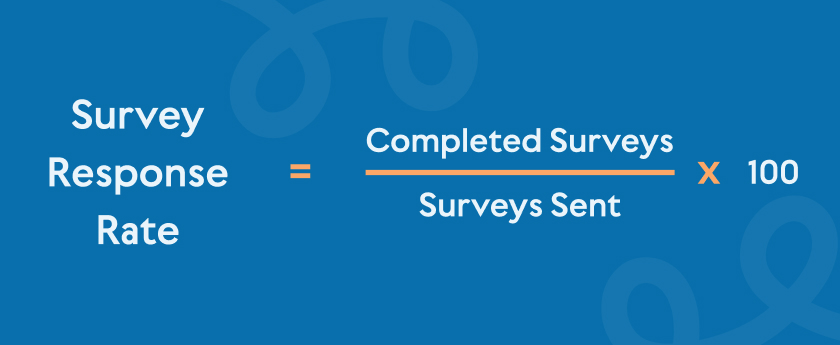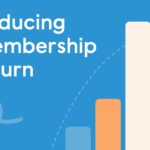Surveys have long been a way for organizations to maintain contact with their members and potential members. At some point, just about every organization will want to conduct a survey of their members, potential members, or the general public. It may be in preparation for an event, a post-event survey, or in reaching out to just get a “feel for the room.” To get the most out of your efforts, understanding how to increase survey response rates is important.
In this guide, we’ll explain what a survey response rate is and what makes a good return. We’ll explore the benefits of higher response rates and provide practical, actionable tips to help you improve your rates. If you’re already using surveys, discover how to boost your response rates with these effective strategies.
The Value of Surveys
Surveys are frequently used as a non-intrusive, non-threatening way to gather what can be valuable data from your target audience.
It is a helpful tool to gain feedback in advance of an event or fundraiser or to get feedback following an event. It can help in checking the pulse of your audience.
Surveys are cost-effective and relatively easy to execute. The key is maximizing your return by increasing survey response rates.
What is a Survey Response Rate?

A survey response rate, sometimes referred to as a completion rate or response rate, is a way organizations can measure how effectively they are in getting survey responses from a targeted group.
In its most simple terms, survey response rates are often measured as a percentage. For example, if 100 members are surveyed and the survey generates 10 responses, the response rate would be 10%.
What Is Considered a Good Survey Response Rate?

A “good survey response rate” varies widely, depending on a variety of factors. These can include the type of industry, how in-depth the survey is, whether there is an incentive for a response, and other factors. This makes a standard “good response rate” challenging to isolate. In fact, good response rates can range from 5% to 30%.
It is generally agreed that response rates below 5% are considered unsuccessful. Those generating 39% or more are considered exceptional.
Perhaps the best way to measure a successful rate for your organization is to measure yours and work to improve that rate with every survey.
A successful return rate for you is one that works for you.
Once you have an established survey return rate, you can work towards improving it.
How to Calculate Your Survey Response Rate.
To find a survey response rate, you need to know the total number of surveys that were sent out and the number of completed responses.
Take the number of completed responses and divide it by the number of surveys distributed.
For example, if you attempted to survey 5,000 people and generated 750 completed responses, the equation would be 750 divided by 5,000, or 15%.
Response rate vs. completion rate – what’s the difference?
Although sometimes used interchangeably, there is a difference between a response rate and a completion rate.
A response rate relates to the number of people who complete a survey after receiving it.
A completion rate is the number of people who actually complete a survey once they begin it.
The distinction can be important in that if a completion rate is low, the survey itself may have barriers within it that may stall or prevent full completion.
It should be obvious that you would want anyone who starts your survey to complete it.
What Are The Benefits of a High Response Rate?
There are tangible benefits to building a high response rate. These include:
- Greater Audience Engagement
- Increased Feedback
- Improved Accuracy
- Better Return on Investment
- Build Audience Relationships
- Serves to Funnel Feedback
- Can Provide Evidence for Decision-Making
Increasing response rates can also build confidence and serve as motivation for constant and consistent improvement. It can expose areas of weakness that may otherwise go unnoticed. Overall, improved response rates for surveys help validate the results of those surveys.
For more insights on keeping your members engaged and retaining them, check out our comprehensive Member Retention Guide.
Tips to Increase Survey Response Rates
1. Keep Surveys Short and Focused
Lengthy surveys with long, drawn-out questions have been shown to get far fewer responses than those consisting of brief, to-the-point questions. To increase survey response rates, keep questions to a minimum and keep them concise. Make the questions simple to understand and straight-forward. When providing multiple choice responses, keep the choices clear.
2. Choose the Right Timing
The right timing can improve survey response rates. Reach your audience when your organization may be at the top of mind, such as following a major event or preceding or following a significant fundraiser.
Surveys can also be valuable when there may be issues in your industry that are controversial or in the news.
To improve survey response rates, keep them timely and pertinent.
3. Explain The Purpose and Importance of The Survey.
Make an effort to make sure your participants understand the importance of your survey and their participation. You can add how the results may be used.
Transparency is more important than ever in marketing and communications. This includes your surveys.
4. Offer Incentives.
You can add incentives for participation in your survey with a small offer or inclusion in a drawing for a larger prize. Incentives could include branded merchandise, discounts, and promotional items. Secure a sponsor for a larger prize drawing, like a trip for all respondents to be entered.
5. Use Clear and Concise Language
If your survey looks daunting to complete, fewer people will likely respond. Keep lengthy paragraphs and text blocks to a minimum. Use short, concise sentences in both instructions and questions. Bold important words.
6. Personalize Invitations
If you want to increase survey response rates, personalize your invitations to participate. Not only can you create more customized surveys for groups of people (attendees, sponsors, vendors, etc.), but using names can elevate participation. Referencing specifics about an event can also make a more personalized connection.
7. Optimize For Mobile Devices
Keep in mind that many participants will fill out surveys in their “spare time.” This means making your survey mobile-friendly is crucial. A majority of internet traffic comes from mobile devices. Users may find time at lunch, while commuting, while watching TV, or on break. Allowing for mobile participation can increase response rates dramatically.
8. Send Reminders
Filling out a survey can quickly fall down a to do list of a participant. Sending them a friendly reminder can be helpful in nudging them along. Be sure to include a link to the survey for those who may not have saved their original invitation to participate.
9. Ensure Anonymity and Confidentiality
Some participants may be hesitant to participate in surveys unless they are assured their feedback can be anonymous. This can also encourage more truthful responses. Let participants know it is their feedback you are interested in, not their identities or personal information. Their opinions and responses are valued.
10. Make Surveys Visually Appealing
Take the time and use the resources to make your survey look professional and appealing. Use easy-to-read fonts, attractive colors, and appealing graphics. Your survey should be easy to view and navigate for improved responses.
11. Craft the Format of Your Questions Carefully.
Use multiple choices; yes or no, and graded responses early. These are easier and simpler to respond to and easier to tabulate. Give respondents a choice of 4 or 5 answers, a yes or no, agree or disagree, or scaled responses ranging from 1 to 5 or 1 to 10. Save any complex or open-ended questions for near the end of your survey.
While multiple choices are easier to tabulate, open-answer responses can provide valuable personalized input.
12. Publish Results to Participants
If you are going to make the results known, let participants know ahead of time. If you want to keep responses closer to the vest, only promise access to results to participants. This can prove to be a benefit for those who take the time to fill out a survey.
13. Qualify and Quantify Your Target Audience
Those who are engaged with your organization and participate in sponsored activities may be more likely to respond to surveys. Take steps to make sure those who are involved in your organization and have participated in surveys in the past are invited to take the most recent survey. Look for survey participants whose opinions you value and who are likely to respond to a survey request.
14. Evaluate the Importance of Your Survey
When people view that their opinion is of value, they are more likely to share their input. When you elevate the importance or significance of a survey, you may be able to increase the response rate. This can be done by limiting a particular type of survey as your ”Annual Survey,” or your “Priority Membership Survey,” or by referring to it as a “Rapid Response” survey. Create a reason why your particular survey is important and why a participant’s input is critical.
15. Create a Survey Deadline Countdown to Build a Sense of Urgency
Keep potential participants aware of how much time they have left to participate. This can be done through a website countdown clock, social media updates, and email reminders. Countdowns not only serve as a reminder but also can create a sense of urgency for participation.
16. Make It As Easy As Possible
Finally, improving survey response rates can be as simple as making your survey as easy to fill out and accessible as possible. Promote it and link it to your website, emails, and social media. Promote it in your newsletter and voicemail. Promote how your survey can steer the future of your organization, and participants will have a say in that direction.
The Importance of Data to Your Organizations
For-profit organizations and businesses have long understood the value of customer data. Customer data, including that gathered from loyalty programs, is helping businesses grow. Now, nonprofit, civic, fraternal, and business and industrial trade organizations are beginning to recognize the increasing value of data for the present and future growth of their groups.
This member data, including outreach efforts like surveys, can add exceptional value to an organization and how they maintain relationships with their members.
Don’t underestimate the value of your member data, including survey results from members.
The data your organization may have access to can be extraordinary. It can be a matter of managing and maintaining it to its full value.
Conclusion
If you are going to conduct surveys, you might as well get the most out of them. Increasing survey response rates is one of the best ways to improve your ROI. You will want to start by establishing your current response rate and work toward increasing that rate with every future survey.
Take common-sense steps to improve response rates, like keeping questions clear and concise. Make your survey visually appealing, and make sure it is mobile accessible. Consider incentives for responses with rewards, discounts, freebies, or entries into a grand prize drawing. Take care to format questions to deliver the most responses and consider making responses available to participants.
Manage Survey Results for Maximum Value
Your surveys can contain valuable information that may be used for years to come. Take steps to compile and manage survey results for maximum value. A member management system can make the tasks easier. See how MemberClicks can help—start a conversation with us today!
















